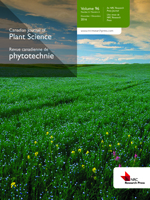Yang, R.-C. and Juskiw, P. 2011. Analysis of covariance in agronomy and crop research. Can. J. Plant Sci. 91: 621-641. Analysis of covariance (ANCOVA) is a statistical technique that combines the methods of the analysis of variance (ANOVA) and regression analysis. However, ANCOVA is an advanced topic that often appears towards the end of many textbooks, and thus, it is either taught cursorily or ignored completely in many statistics classes. Additionally, many elaborated applications of ANCOVA to agronomy and crop research along with uses of the latest statistical software are rarely described in textbooks or classes. The objectives of this paper are to provide an overview on conventional ANCOVA and to introduce more advanced uses of ANCOVA under mixed models. We describe three elaborate applications including (i) the use of ANCOVA for dissecting dosage responses for different treatments, (ii) stability of treatments across multiple environments and (iii) removal of spatial variation that is not effectively controlled by blocking. These analyses illustrate that ANCOVA is either a simpler analysis or provides more information than conventional statistical methods. We provide a technical appendix (Appendix A) on principles and theory underlying mixed-model analysis of ANCOVA along with SAS programs (Appendix B) for more uses and in-depth understanding of this powerful technique in agronomy and crop research.
How to translate text using browser tools
1 July 2011
Analysis of covariance in agronomy and crop research
Rong-Cai Yang,
Patricia Juskiw
ACCESS THE FULL ARTICLE
It is not available for individual sale.
This article is only available to subscribers.
It is not available for individual sale.
It is not available for individual sale.

Canadian Journal of Plant Science
Vol. 91 • No. 4
July 2011
Vol. 91 • No. 4
July 2011
Analyse de la covariance
analyse de la stabilité
analyse du plus proche voisin
Analysis of covariance
contrôle statistique des erreurs
dosage response
mixed models




